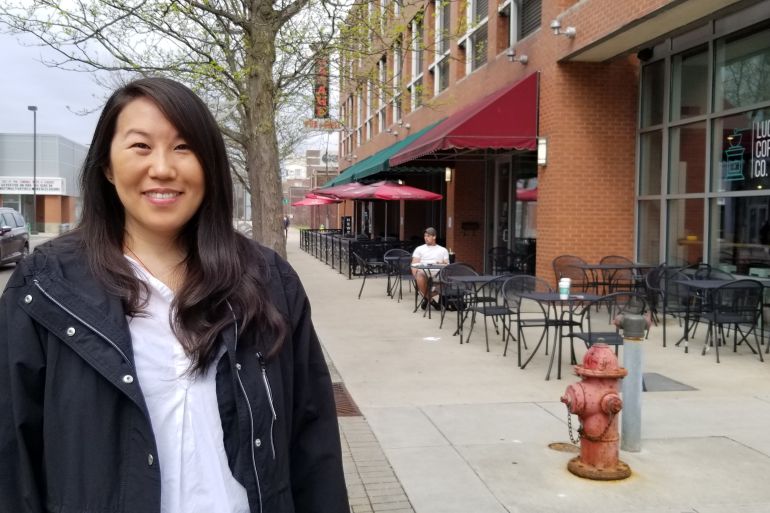How professional immigrants are reviving the US Midwest
Small cities like Columbus, Indiana now represent the most rapidly diversifying parts of the United States.

Columbus, Indiana, the US – Surrounded by cornfields and rolling plains, the Indiana city of Columbus is a rapidly diversifying boomtown. A large part of that success comes down to a surprising trend: large, highly skilled immigrant communities.
People from around the world have moved here to work for multinational companies, from the Cummins engine plant, to the Toyota forklift manufacturer, to the technology firm LHP. Small Midwestern cities such as Columbus, in the traditionally conservative heartland, now represent the most rapidly diversifying parts of the country.
Keep reading
list of 3 itemsUS detention of asylum seekers ‘inhumane and wasteful’: Report
Health coverage for all immigrants in California: Newsom plan
“My next-door neighbours are Indian; I also have people who are from Ukraine, who are [Arab], and from Guatemala, in my neighbourhood,” city councillor Elaine Hilber, whose parents immigrated to Indiana from Taiwan in the 1980s, told Al Jazeera.
More than 15 percent of the city’s population of around 50,000 is foreign born, while nearly a fifth speaks a language other than English at home. Columbus hosts associations for Chinese, Pakistani and Korean residents, among many others.
Boasting significant economic growth in recent years, the city is drawing immigrants to fill professional gaps and invigorate the region, even as United States population growth overall has dropped to its lowest rate since the Great Depression.
According to the Migration Policy Institute, the foreign-born populations of states such as Wisconsin, Illinois, Iowa, Ohio and Indiana are increasing at a dramatically faster rate than the US-born populations; in Indiana, for example, the foreign-born population increased by 92 percent from 2000 to 2019, while the US-born population grew by just eight percent.
“It’s a win for us [Americans],” said Jina Krause-Vilmar, the CEO of Upwardly Global, a US non-profit that helps immigrants find jobs in the country. Nearly half of all immigrants coming to the US hold a bachelor’s degree, she noted. “It also creates shared prosperity: We have a lot of data that shows when immigrants settle in a community, they stay in those communities and contribute to them.”
Valuable assets
This type of immigrant-fuelled growth is especially important in so-called Rust Belt cities, such as Detroit, the centre of North America’s automotive industry, which has struggled with a declining population for decades. Such is the growth in South Asian communities in and around the city that it is not uncommon to see films screened in the Tamil, Hindi or Telugu languages.
With the automotive industry now undergoing major transformations, including electrification and increasing automation, skilled labour is in renewed demand in Michigan, observers say.
“Immigrants, refugees and others who have college degrees, particularly graduate degrees in the STEM [science, technology, engineering and mathematics] fields – they really right now are probably the world’s most valuable economic asset,” Steve Tobocman, executive director of the local non-profit Global Detroit, told Al Jazeera.
But challenges persist. During the four years of the administration of former US President Donald Trump, many aspects of the US government’s immigration processing structures, including those pertaining to refugee applications, ground to a halt. While around 127,000 H-1B visas – an immigration class for highly skilled foreign workers – will be issued next year, tens of thousands of other applicants were not approved by US Citizenship and Immigration Services because of a cap.
In addition, a million immigrants are reportedly still waiting on work permits, worsening the country’s labour crisis. “It should not take someone six months to a year to have their work authorisation renewed,” Krause-Vilmar told Al Jazeera.
At the same time, a recent study by the Cato Institute think-tank found that H-1B visa holders were in the top 10 percent of US wage earners, with a median wage of $108,000 – a statistic that counters the right-wing notion that immigrant labourers contribute to lower wages across the board.
And the change isn’t limited to jobs and the economy. As Columbus and other US Midwestern towns rapidly diversify, people from minority communities are also looking to shape their own future by diving into local politics.
“Columbus is just the right size,” said Hilber, who was 28 when she launched her first successful bid for a city council seat in 2015. “You’re able to make things happen and get things done – to help people.”